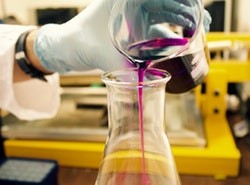
Improving DNA Damage Repair Mechanisms in Breast Cancer
Published: 05/21/20 3:49 AM
Associate Professor
Stacey Edwards
Project Description: A common feature of many forms of breast cancer is a defect in DNA repair pathways. A class of drugs known as PARP inhibitors can selectively kill the cells with the repair pathway defect, but many patients quickly develop resistance to these treatments. Associate Professor Stacey Edwards and her team at QIMR Berghofer Medical Research Institute have uncovered a new class of molecules (called IncRNAs), which could improve the effectiveness of PARP inhibitor treatments.
Why this work is needed: PARP inhibitors are a treatment option for many forms of breast cancer, which share the feature of defects in the DNA repair pathway. However, these drugs are often not effective long-term, as patients can develop resistance. This study will investigate a possible addition to the treatment regime which could significantly improve the patient outcomes.
Expected outcomes: The study will use a technique known as CRISPR/Cas13 screening to measure the ability of a new molecule class (IncRNAs) to improve the effectiveness of PARP inhibitor treatment. This could provide a new treatment option for patients with these tumour types, including those that originate from mutations in the BRCA1 and BRCA2 genes.
Project details
While breast cancers are clinically diverse, many of the subtypes share a common feature – a defect in the ability of cells to repair DNA damage. Up to 20% of breast cancers, including those in patients with mutations in the BRCA1 and BRCA2 genes, have a defect in a DNA repair pathway called homologous recombination (HR).
A class of drugs known as PARP inhibitors (PARPi) are able to selectively kill cells which have errors in the HR repair pathway. Some PARPi drugs are already approved for clinical use, but many patients develop resistance. Hence, there is an urgent need to develop drugs that can be used in combination with PARPi to enhance its effect, and prevent resistance development.
A/Prof Edward’s laboratory have previously shown that a new group of molecules, called IncRNAs, can assist in DNA repair. As such, they believe that IncRNAs may be able to be used in conjunction with PARPi as a more effective treatment option. To test this theory, they will use a new technique called CRISPR/Cas13 screening.
The study has the potential to provide a major breakthrough which could significantly improve the treatment of patients with HR-deficient breast tumours (including those arising from BRCA1/2 mutation carriers), as well as patients that develop PARPi resistant breast tumours.